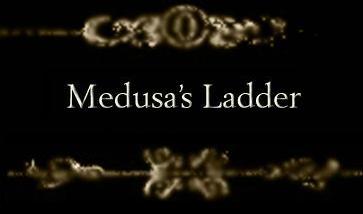|
|
|
|
|
|
|


Shadow under this Red Rock: Problems of Pareidolia
I’ve been thinking lately about my specific interests within the paranormal and esoteric realms; the way I go through phases of intense engagement in subjects and topics that I may have previously dismissed as boring or uninteresting. What accounts for the reasons, seemingly random, that spark our interest and engage our sensibilities
For example, until very recently, I’ve always dismissed the contactee phenomenon. I’ve associated it incorrectly, with Dame Edna look-alikes wearing silver suits and rainbow capes. In other words, it seemed completely tongue in cheek and ultimately meaningless; I dismissed it as kitsch and novelty. Then, it all kind of clicked for me when I began seeing connections between the contactee phenomenon and other things I was interested in: Spiritualism, Marian apparitions, the Hero journey and other archetypal elements. I imparted my own meaning, and now the contactee phenomenon seems quite complex and intriguing.
I’ve never been that gung ho over the Loch Ness Monster, I’m just now starting to look at Sasquatch with a curious eye, and a couple years ago, I never would have guessed that alchemy or Aleister Crowley would enthrall me. I love UFO and alien theories, but really have little interest in stories about abduction, implants, and the like. I love reading about moon anomalies, but I always found the face on mars boring and tired. But—is everything complex and meaningful, once we assign our own meaning, or when we find some personal association?
I have been fascinated by the recent ‘figure on Mars’ images. The first time I saw the image, I was struck by a couple things. First, with the obvious outline of breasts, why was the figure being referred to overwhelmingly as a ‘man’; was it the notion that the figure is a Bigfoot that hints at maleness? Ironically, ‘male’ seems to stick with Bigfoot, even though what’s considered by many to be the best Bigfoot footage, the Patterson film, clearly also shows the creature sporting breasts.
The ideas of gender, identity, language, etc. interest me, so this accounts for some of my curiosity, but far more than that, the figure on Mars photo evoked an overwhelming sense of familiarity that I couldn’t quite place. Had this photo circulated previously? Where had I seen this image? Does my reaction have something to do with some kind of intuition about the ‘reality’ of the figure? Days later, it stuck me—many years ago, at the Great Salt Lake, I had taken a series of photos that were eerily similar.

I’m generally interested in phenomena that can fit into the ‘pareidolia’ category; that is, mundane things that we imbue with meaning due to a psychological effect involving perception, interpretation and representation. I find it curious that pareidolia is used to entirely dismiss specific phenomena, as it is an intriguing thing itself, and maybe more complex than a simplistic, straightforward explanation.
|
The element of mimicry might be seen as a form of pareidolia. Animals and plants have evolved and adapted to employ certain markings, features, and abilities—a type of (often visual) communication—for various advantages. For example, the Hawk Moth Caterpillar (pictured on the right) inflates its throat as a defense mechanism, resulting in a snakelike appearance, complete with false eyes. The misperception here is apparently intentional and meaningful. Nature employs and manipulates loaded imagery (faces, eyes, etc.) on false canvases as signs and communication. | 
|
Really meditating on the mystery of this; the hints of a collectivity, a self-awareness, the underlying wisdom and unfathomable mechanics of it all, can we really be certain it begins and ends with bugs? Neolithic era dwellings built into land with stone resemble natural caves. Perhaps this is an example of humans emulating a natural design that worked—a conscious effort. The caves, like the moth’s inflated throat, are a sign from which meaning and purpose is assumed and extracted.
Although it’s curious, it doesn’t seem to necessarily matter whether there’s a conscious intention on the part of the signifier. The medium may be the message, and the medium may have its own separate set of workings. It seems to me, that with examples such as the figure on Mars, the important discussion and evaluation gets lost somewhere in between the north and south, black and white poles of ‘meaning’—between real and unreal, intentional and random, signifier and signified, science and belief, etc. And since the discussion ends up getting lost in the gray area anyway, why not start the discussion from such a place, without a goal of getting to one side or the other?
Even on a personal level, it’s interesting to ruminate on exactly what sparks our interest in one thing over another, what makes these reactions change, etc. Is it random, or dependent on some hidden visceral connection or vaguest ineffable memory—our own private girls on Mars?
Visit Richelle's blog: Beamships Equal Love